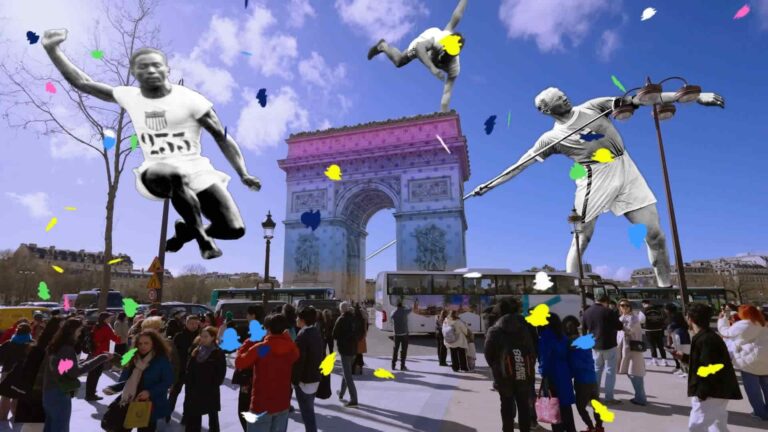
The 2024 Summer Olympics in Paris have come and gone, but there’s much to look back on. Besides the primary sporting events and accomplishments, there was a tech angle to the summer games this year, including AR activations from Snap, Google, and a handful of others.
Beyond longstanding AR integrations with event broadcasts – such as graphical swim-lane overlays – fans attending the games were given several immersive experiences. Among other things, the International Olympic Committee (IOC) offered an AR section of the official event app.
That included non-commercial AR experiences in and around the event venues that highlighted Olympic-themed animations. For example, using the app and QR codes placed in high-traffic areas, users could activate AR experiences that featured events, athletes, and Olympic history.
Photo Finish
These AR experiences in the official event app were created in collaboration with Snap, and also available in the Snapchat App. This is a good example of Snap’s Camera Kit, which is an SDK that enables Snap lenses within a given entity’s own domain – in this case the Olympics app.
Powering lenses within the official Olympics app wasn’t the only place Snap AR participated in the games. Its Snapchat Cam augmented on-site fan footage on the jumbotron screens of 30 venues across the Olympic games. It has already done similar at several NFL games.
Snap also partnered with Coca-Cola to create the world’s first AR vending machine. These featured a custom AR mirror that displayed augmented selfies, games, and other AR fare. The vending machines were placed in the athletes’ village and at Coca-Cola’s international food fest.
Lastly, Snap’s AR Studio, Arcadia, partnered with NBCUniversal to bring more Olympics-related content to Snapchat. This included front-row footage of the Opening Ceremony, personalized tune-in recommendations, real-time stats & leaderboards, and Team USA Bitmojis.
Game On
Beyond Snap’s multi-faceted AR play at the Olympics, Google brought some of its own flavors of AR to Paris. Using Google Maps, users could point their phones at specific landmarks to see them come to life, including time-lapsed animations that show historical footage of famous spots.
For example, pointing one’s phone at the Eiffel Tower revealed animated overlays of its original architectural concepts – some of which were never built. Or doing the same at the banks of the Seine revealed structures that were built for the Exposition Universelle World Fair in 1900.
If any of the above sounds familiar, it’s because Google teased it at Google I/O in May before launching it at the Olympics. It also builds from Google’s Geospatial API. Utilizing all the visual and positional data in Street View, the API lets developers build experiences like these.
But one thing that made these Parisian landmark animations unique was that it was the first time Google brought place-based AR effects to Google Maps (not counting Live View AR navigation). This should make AR more discoverable by letting it piggyback on such a well-traveled app.
Chance to Shine
Sticking with that last point, AR could use a bit of a nudge in getting it in front of more users. Though its utility, appeal, educational value, and fun factor make it a no-brainer to many of us, the truth is that it’s been slow to gain consumer traction. Habits are hard to break… even 2D ones.
So amplified exposure through established apps and events can be one way to accelerate the learning curve and adoption process around consumer-based AR. Snap has been doing this for years by bolting AR to already-popular activities like social sharing. Google has done similar.
That’s why AR’s role at the world’s biggest sporting event could give it a boost. That includes IOC endorsement, inclusion in the official event app, and Snap & Google’s propulsion. It’s too early to say if these measures move the needle, long term, but AR was at least given a chance to shine.

